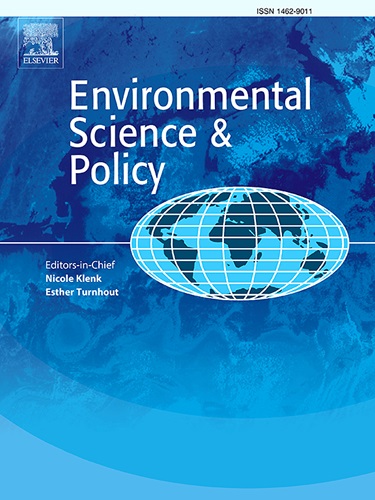What motivates local leaders of community forests in Nepal? An examination of leaders’ expressed values and experiences
IF 5.2
2区 环境科学与生态学
Q1 ENVIRONMENTAL SCIENCES
引用次数: 0
Abstract
Nepal’s community forestry (CF) program, a globally recognized model of participatory forest management, relies on voluntary local leaders to guide forest management and governance decisions. Sustaining voluntary leadership has become increasingly challenging because of outmigration, declining forest dependence, and growing urban influence on rural livelihoods. In this study, we explore the values and motivations of existing leaders of community forest user groups (CFUGs), which underpin the leadership characteristics in sustaining these local institutions. We surveyed 144 leaders of 49 CFUGs in Nepal’s mid-hills and used their responses as indicators of leadership values, derived from the “Motivation to Lead” and related theoretical frameworks. Using exploratory factor analysis and a multiple indicators multiple causes (MIMIC) model, we identify three motivation factors and examine their associations with leaders’ individual and CF characteristics. The results suggest that, out of the 16 indicators, eight explain core values and motives clustered into three latent motivation factors, indicating three axes of leadership motivation in Nepal’s CF program: environmental stewardship, altruism, and power and influence. Leaders were likely to be motivated by either environmental stewardship or altruism. However, leaders motivated by either altruism or environmental stewardship were also motivated by the power and influence. Furthermore, individual leadership characteristics such as leadership position and duration, and CF characteristics such as forest type, support from non-governmental organizations, fire incidences, and leadership experience in local governments, are associated with leadership motivation factors. These findings inform understanding of voluntary leadership drivers in CFUGs, for strengthening and sustaining community-based forest management in Nepal.
是什么激励尼泊尔社区森林的当地领导人?对领导者所表达的价值观和经历的考察
尼泊尔的社区林业(CF)项目是全球公认的参与式森林管理模式,它依靠自愿的地方领导人来指导森林管理和治理决策。由于人口外迁、对森林的依赖程度下降以及城市对农村生计的影响越来越大,维持自愿领导已变得越来越具有挑战性。在这项研究中,我们探讨了社区森林用户团体(CFUGs)现有领导人的价值观和动机,这些价值观和动机支撑着这些地方机构的领导特征。我们调查了尼泊尔中部山区49个cfug的144名领导人,并将他们的回答作为领导价值观的指标,这些指标来自“领导动机”和相关理论框架。运用探索性因子分析和多指标多原因(MIMIC)模型,我们确定了三个激励因素,并考察了它们与领导者个人和CF特征的关系。结果表明,在16个指标中,有8个解释了核心价值和动机聚集在三个潜在动机因素中,表明了尼泊尔CF计划中领导动机的三个轴:环境管理、利他主义、权力和影响力。领导者的动机可能是环境管理或利他主义。然而,无论是出于利他主义还是环境管理的动机,领导者也受到权力和影响力的驱动。此外,个人领导特征(如领导职位和任期)和CF特征(如森林类型、非政府组织的支持、火灾发生率和地方政府的领导经验)与领导动机因素相关。这些发现有助于了解尼泊尔社区森林管理小组中自愿领导的驱动因素,以加强和维持尼泊尔社区森林管理。
本文章由计算机程序翻译,如有差异,请以英文原文为准。
求助全文
约1分钟内获得全文
求助全文
来源期刊

Environmental Science & Policy
环境科学-环境科学
CiteScore
10.90
自引率
8.30%
发文量
332
审稿时长
68 days
期刊介绍:
Environmental Science & Policy promotes communication among government, business and industry, academia, and non-governmental organisations who are instrumental in the solution of environmental problems. It also seeks to advance interdisciplinary research of policy relevance on environmental issues such as climate change, biodiversity, environmental pollution and wastes, renewable and non-renewable natural resources, sustainability, and the interactions among these issues. The journal emphasises the linkages between these environmental issues and social and economic issues such as production, transport, consumption, growth, demographic changes, well-being, and health. However, the subject coverage will not be restricted to these issues and the introduction of new dimensions will be encouraged.
 求助内容:
求助内容: 应助结果提醒方式:
应助结果提醒方式:


